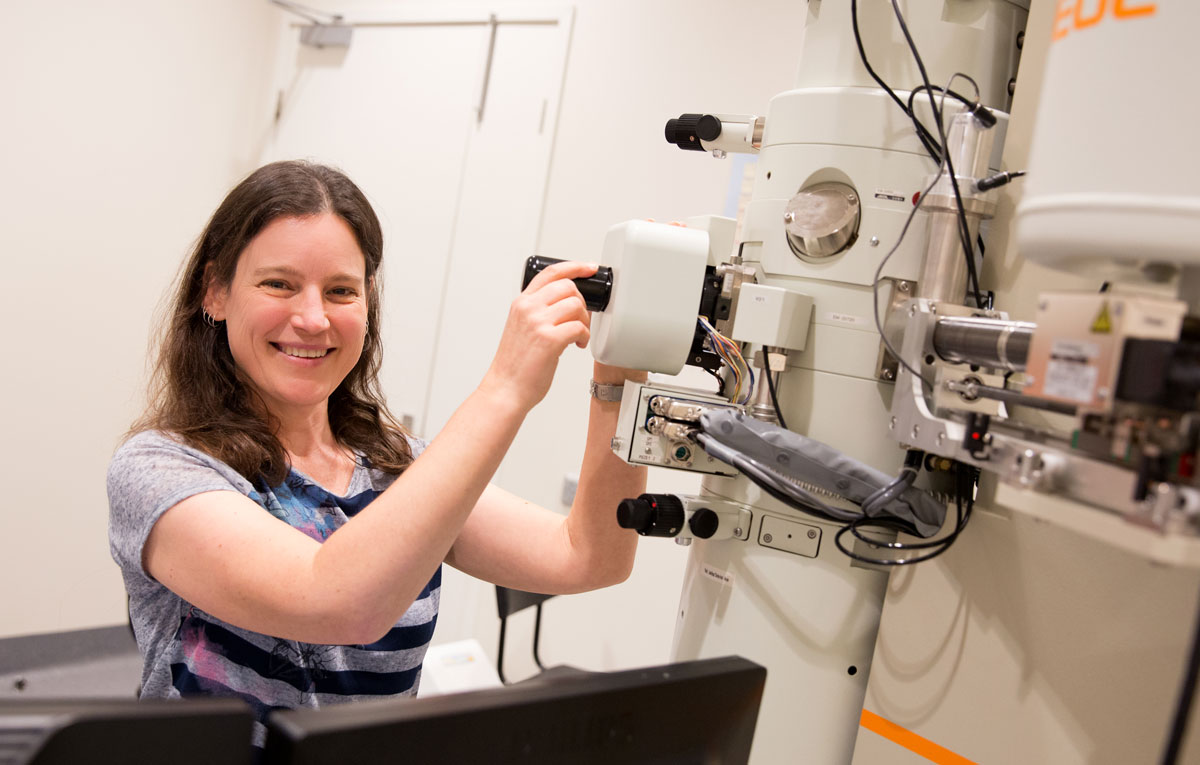Researcher Highlights
Probing the microscopic world of materials
Associate Professor Vicki Keast
Using a combination of advanced electron microscopy measurements and quantum simulations, Assoc. Prof. Vicki Keast investigates the fundamentals of materials properties.

A fascination for quantum mechanics
“I always enjoyed quantum mechanics during my undergraduate studies, and a series of serendipitous events and connections led me into the field of electron microscopy.”
Electron microscopy naturally involves quantum mechanics - we rely on the wave-particle duality of electrons to image our samples. We can visualise structures right down to the atomic scale and measure the way the atoms are bonded together. When we measure the energy lost by the electrons, we obtain the most beautiful and complicated spectra. The details contained in those spectra can be connected to the behaviour of the electrons in the solid and hold the key to understanding the properties of those materials.
Untangling the meaning of those spectral details is where the theoretical challenge comes in. We need to use sophisticated quantum mechanical simulations to describe how the electrons in the material interact with each other and with nuclei in the material, and then how they respond to the electrons of the electron microscope. It is a complex, interacting, many-body, quantum physics problem that pushes our theoretical and computational resources to the limit.
Curiosity driven research
“I sometimes describe myself as a bowerbird of research as I find myself drawn to collecting scientific problems involving materials with interesting colours. Why are copper and gold orange and yellow, when other metals are colourless or grey? Why is it that when you mix gold and aluminium, you get a beautiful purple metal? Well, we can use electron microscopy and quantum mechanics to answer those questions.”
It turns out that the purple colour of the gold-aluminium alloy arises from a collective oscillation of the electrons called a plasmon. Vicki and her students have been able to use a similar plasmon response to devise a series of compounds, called sodium tungsten bronzes, that we can tune to span colours from deep a blue, through magenta to a brilliant yellow.
Plasmonic materials are more than a colourful curiosity, when we structure them at the nanoscale, they have a range of diverse and important applications. They can perform ultra-sensitive chemical and bio-sensing, improve the efficiency solar cells, split water to produce hydrogen, be used infra-red shielding windows and even be used for tumour therapy.
Where are all the women?
When Vicki first joined the physics discipline, she was the first female academic to be appointed in its history. The situation is vastly different today, with the University of Newcastle being the only physics department in Australia, and one of the few in the world, with equal representation of male and female academics.
“Despite our success in attracting female academics here, when I teach classes today, the proportion of women in the class is no different than when I studied physics myself nearly 30 years ago.” Typically, women and girls make up only about 20% of physics students and researchers and this proportion hasn’t shifted in decades.
There is a lot we can do to ensure that our classes and environment are welcoming and inclusive to all students, but to understand why so few women choose to come to study physics in the first place requires a much deeper questioning about how society views both gender and physics. I am currently researching whether there is any difference between the public perception of what physicists do and what we really do. I suspect the public perception is of a field that is more narrow and less socially relevant than the reality. I am also looking at ways we can reframe our thinking of gender away from a binary scale into visualising it as multi-dimensional space.
The University of Newcastle acknowledges the traditional custodians of the lands within our footprint areas: Awabakal, Darkinjung, Biripai, Worimi, Wonnarua, and Eora Nations. We also pay respect to the wisdom of our Elders past and present.
